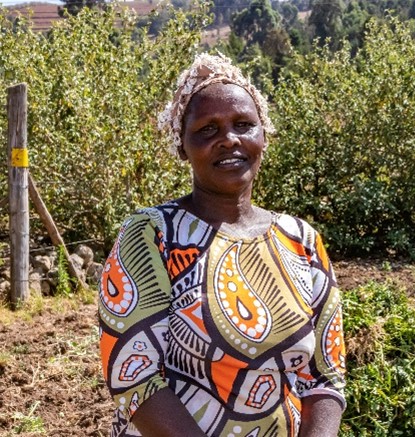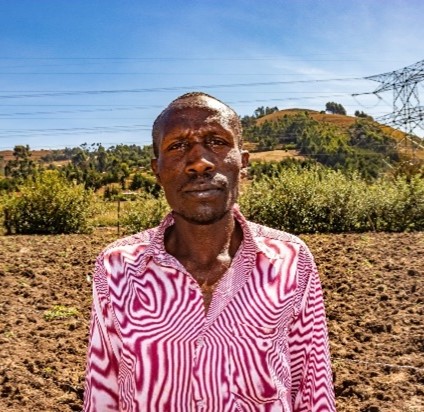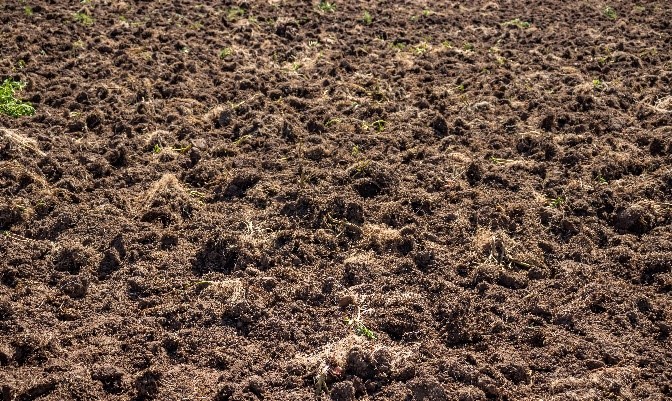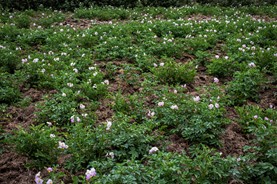Blending local knowledge with improved practices to strengthen farmer resilience
25-04-2022Through the support of the CRAFT Project and Agriterra, the Starlight Farmers’ Cooperative Society has set up several demonstration farms show-casing a variety of practices with a potential to increase farmer yields, quality and build farmer resilience in the advent of climate change. These practices range from soil and water management practices, pest and disease control, harvest, and post-harvest practices.
To enhance adoption and scaling of CSA practices and technologies, there is an increased need to document how different types of smallholder farmers vary in their perceptions and responses to climate change as well as effective methods of tailoring adaptation programs to different smallholder contexts. This is because smallholder farmers are the most vulnerable to impacts of climate change.
“I am accustomed to the traditional method of potato farming, but with the ever-changing weather patterns, the use of Climate Smart Agriculture (CSA) practices has proven to be more sustainable in increasing my productivity,”
says Emily Sitienei, a smallholder farmer currently undergoing CSA training through the Starlight Farmers’ Cooperative Society.

Emily Sitienei
One of the main production practice covered on the demonstration sites was the comparison between the conventional/traditional ridge-planting and the CSA surface planting. Conventional ridging, a method involving inserting the seed in a ridge and covering with soil has been noted to reduce the yield due to inability of the seed potato to penetrate the hard pan. On the contrary, in surface planting the seed potato is placed on the soft soil-surface and a hill made, allowing the tubers to penetrate, hence increasing yields. Ridging is considered a conventional practice while surface planting is considered a modern practice with a potential to increase potato yields. The two practices were demonstrated on the same piece of land where the 20 group members took care of the crops.
“My take on both the traditional and CSA potato farming practices is that they are both useful depending on the weather season. During long rains (MAM), the CSA (surface planting) method is more fruitful for me as it increases yields while during short rains (OND), the traditional method works very well by the time I harvest,”
says Charles Maritimi, a smallholder farmer based in Nakuru.

Charles Maritimi
This was evident from the demo-farm that was done during the short rains season and conventional ridging practice yielded more and higher quality potatoes compared to the CSA surface planted potatoes. This was due to the ability of the trenches to trap the limited moisture available in the ridges. This allows the water to penetrate the soil to reach the seed hence better yields as opposed to surface planting, whereby the limited moisture could not penetrate the soil heap which led to moisture stress in the seed hence low yields. From the demonstration plot training, the farmers concluded that the CSA surface planting is produces better yield during the long rains as opposed to conventional ridging, which produces better yield during the short rains.


In conclusion, the main take-away lesson for farmers and the agronomists drawn from the demonstration plot was that in order to strengthen the farmer resilience, there is need to tailor the practices to the local farmer contexts as opposed to having a one-fits-all approach. Additionally, local knowledge blended with the improved technologies and practices can work hand-in hand in strengthening the farmer resilience and hence adaptive capacity.
Lead author: Patrick Kagathi, Business Advisor at Agriterra, Kenya
Editor: Caroline Songa (Climate Resilient Agribusiness for Tomorrrow - CRAFT)
